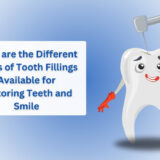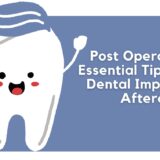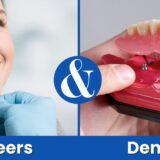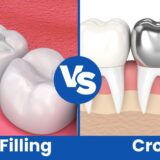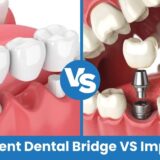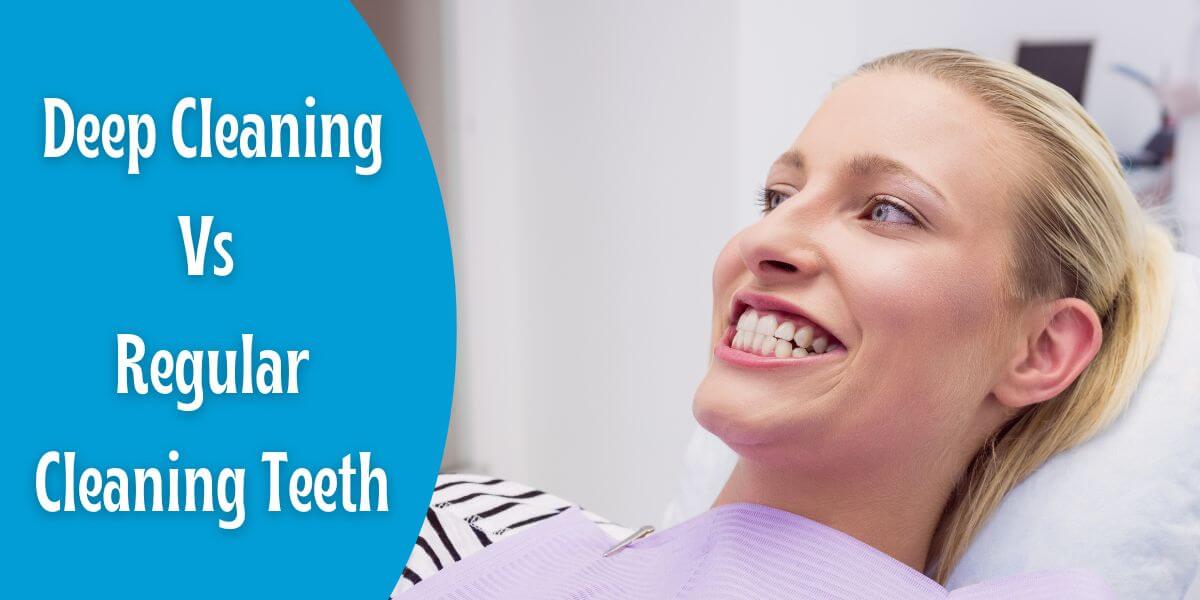A bright, healthy smile is not only visually appealing but also crucial for maintaining overall oral health. Maintaining optimal oral hygiene and preventing dental issues relies heavily on proper dental care, which includes regular teeth cleaning. Regular teeth cleaning, also known as dental cleaning or prophylaxis, is a fundamental procedure to eliminate plaque, tartar, and stains from the teeth. One can opt for two types of dental cleaning: regular cleaning or deep cleaning.
This article will explore the importance of teeth cleaning for maintaining a healthy smile, and sort out the differences between deep cleaning and regular cleaning. It delves into key aspects of the procedure, from removing plaque and tartar to preventing gum disease and tooth decay through professional dental cleaning solutions. By shedding light on the differences between regular teeth cleaning and deep cleaning, we aim to emphasize their significance.
What is Deep Cleaning Teeth
We are usually more familiar with regular dental cleaning, hence, the question arises, what is deep cleaning?
Deep cleaning, also known as Scaling and Root planing, is an extensive procedure primarily used to treat periodontal disease (gum disease) or to clean a significant buildup of tartar and plaque below the gumline. It involves the following steps:
- Scaling: It is performed to remove the plaque and tartar on your teeth, but deep cleaning conducts scaling beyond the visible surfaces of the teeth. The dentist reaches below the gumline to remove tartar from the tooth roots and the pockets between the teeth and gums.
- Root Planing: After scaling, the rough spots on the tooth roots are smoothed out. Root Planing helps eliminate bacteria and promotes the reattachment of the gums to the teeth.
Deep cleaning is usually performed under local anesthesia to ensure comfort during the procedure. It may require multiple visits to your dentist, with each visit focusing on different areas of the mouth. Deep cleaning is recommended when there are signs of gum disease, such as
- gum inflammation
- bleeding
- deep periodontal pockets
Before and After Deep Cleaning
There are several noticeable changes in the oral health and appearance of a person’s teeth and gums before and after deep cleaning. Here are some common differences you may observe:
- Reduction in Gum Inflammation: Before deep cleaning, a person’s gums may appear red, swollen, and tender due to plaque and tartar. After deep cleaning, there is a significant reduction in gum inflammation, and the gums appear healthier and less irritated.
- Improved Gum Attachment: Deep cleaning involves root planing, a process that smooths out rough spots on the tooth roots. This helps the gums reattach to the teeth more firmly, reducing the depth of periodontal pockets. After deep cleaning, the gums will likely fit more tightly around the teeth, providing better support and stability.
- Removal of Tartar and Stains: Deep cleaning effectively removes stubborn tartar and stains that have accumulated below the gumline and on the tooth surfaces. As a result, the teeth appear cleaner, brighter, and free from discoloration caused by plaque and external factors like smoking or consuming staining substances.
- Fresher Breath: The bacteria present in plaque and tartar can contribute to bad breath. Deep cleaning eliminates the buildup of these bacteria, leading to fresher breath and improved oral odor.
- Improved Oral Health: Deep cleaning is primarily performed to address gum disease, which aims to halt the progress of the condition. After the procedure, the risk of further gum tissue damage and tooth loss is significantly reduced. Overall, deep cleaning helps restore and maintain a healthier oral environment.
It is important to note that the results of deep cleaning may vary depending on the severity of gum disease and individual oral health conditions. Additionally, after deep cleaning, it is crucial to maintain regular oral hygiene practices, including proper brushing, flossing, and regular dental check-ups, to sustain the procedure’s benefits and prevent future issues. Your dentist will provide personalized advice on maintaining oral health post-deep cleaning.
What Is Regular Teeth Cleaning
Compared to Deep cleaning, regular cleaning is a different type of dental procedure that focuses on maintaining oral health but differ in terms of their scope and purpose.
Regular Cleaning (Prophylaxis)
When it comes to maintaining good oral health, regular cleaning plays a crucial role. Also known as prophylaxis or routine dental cleaning, this preventive measure is performed by skilled dental professionals – either a dental hygienist or dentist. The main objective of this procedure is to eliminate plaque, tartar (calculus), and any unsightly stains from the teeth. To ensure comprehensive care, the process generally encompasses of the following methods:
- Scaling: The dentist uses a handheld instrument or an ultrasonic scaler to effectively remove plaque and tartar from the tooth surfaces. This includes targeted cleaning both above and below the gumline.
- Polishing: Polishing involves using a rotating rubber cup or brush, along with an abrasive toothpaste, to create a smooth and stain-free surface on the teeth after scaling. This step effectively removes any surface stains and leaves the teeth feeling noticeably smoother.
- Fluoride Treatment: During a dental cleaning, fluoride treatment may be offered to patients as an additional step to strengthen their tooth enamel and reduce the risk of tooth decay. This can involve applying either fluoride gel or varnish onto the teeth.
Regular teeth cleanings are usually recommended every six months to maintain optimal oral health and prevent gum disease and tooth decay. They are suitable for individuals with healthy gums and minimal tartar buildup.
Disadvantages of Deep cleaning
However, deep cleaning also has certain disadvantages over regular cleaning. They are:
- Sensitivity and Discomfort: Deep cleaning involves accessing and cleaning below the gumline, which can cause temporary sensitivity and discomfort during and after the procedure. Some patients may experience sensitivity to temperatures or discomfort while chewing. However, these symptoms typically subside within a few days.
- Anesthesia and Multiple Appointments: Deep cleaning can be time-consuming and may require local anesthesia to numb the gums and make the procedure more comfortable. In certain cases, the treatment can be performed in multiple appointments.
- Cost: Deep cleaning is a more involved and intensive procedure compared to regular cleaning. As a result, it may be more expensive than routine dental cleanings. It is important to discuss the cost and insurance coverage with your dental provider beforehand.
- Post-Treatment Maintenance: The long-term success of deep cleaning relies on diligent oral care post deep cleaning. This includes thorough brushing, flossing, and the use of antimicrobial mouth rinses as recommended by your dentist.
Conclusion
To conclude, it is important to emphasize on teeth cleaning as a fundamental aspect of oral health care. Despite the potential temporary discomfort and higher cost, the before and after results of deep cleaning outweigh its disadvantages. It is an essential procedure for people with gum disease, providing restored oral health, fresher breath, and overall improved well-being.
Regular post-treatment maintenance and adherence to good oral hygiene practices are crucial to sustain the positive effects of deep cleaning. Hopefully your questions on what is deep cleaning and what is regular teeth cleaning have been answered. Consulting with a dentist beforehand will provide personalized guidance and ensure optimal outcomes for long-lasting oral health.
FAQs
1. How long does a deep cleaning take?
The process for a deep cleaning usually requires more than one visit and depends on the severity of gum disease and the level of bacteria and plaque. One visit will assumably take 45-60 minutes or so where a dentist will be able to clean ¼ of your mouth.
2. Is Dental cleaning worth it?
A dental cleaning holds significant value, making it worth the investment. These professional cleanings contribute to a bright and radiant smile and play a crucial role in maintaining your oral and overall health.
3. How long does a regular teeth cleaning take?
If your teeth are healthy and clean, a regular teeth cleaning should typically last around 30 minutes. However, if oral health is compromised with cavities and tartar buildup present, the cleaning procedure may extend closer to an hour.

